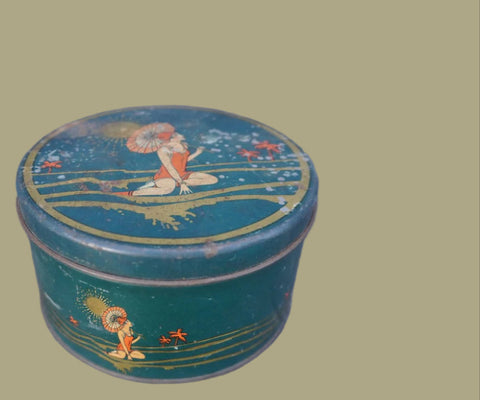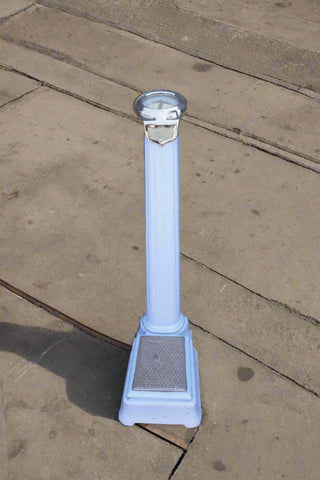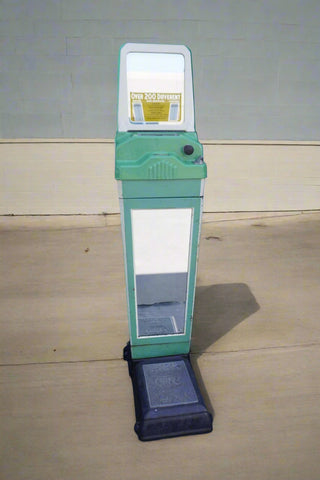Serge Nekrassoff Pewter and Rosewood Tea Set
Gorgeous Nekrassoff four-piece pewter and rosewood tea set, 1920s. Includes tray, teapot, sugar and creamer. Rosewood handle on the teapot. Beautiful craftsmanship. Tray is 17 x 15.
Serge Nekrassoff was born in Russia, February 10, 1895. By the early 1900's, he was serving in the Russian Imperial Guard. He was fluent in many languages, including Russian, German, French, and English. By the time of the Russian Revolution (1917), Serge was forced to flee westward.
He stopped first in Germany and for 18 months worked as a coal miner. He soon left and went to France in 1919. He first earned a living as a taxi driver in Paris. At the same time, he began learning the art of metal-smithing in copper and by 1920 was beginning to sell his pieces in Paris. Around 1923, he traveled to Argentina, and remained there for 18 months, continuing to make and sell his copper pieces.
He had gained his passport and visa to travel to America, and was living in Philadelphia by October, 1925. Within the next month, he was living in New York City and had set up his first studio and shop on14th Street. This was when he was working exclusively in pewter: all of the pieces at this time were marked 'Nekras PEWTER'. In New York Serge met his future wife, Russian emigre Mary Leslie, who had been previously married with a son, Boris. Serge and May were married in 1928 and Serge adopted Boris.
By 1931, Serge had moved to Darien, Connecticut, and by 1937, a shop and studio had been built. Most pieces made at this time were still pewter, but some copper and copper/pewter combination pieces were being made at this time. It was in this period that the shop employed 18 craftsmen, the most to work for Nekrassoff at any one time. The finished pewter pieces, at the height of the Depression, were being sold to markets in Canada, South Africa, London, and throughout the US.
Unfortunately, by the late 1930's pewter was becoming harder to make as tin was becoming scarce, due to the Japanese aggression in Asia. Most of the tin mines at that time operated in the Far East, and the Japanese stopped the export of tin from these areas just before the opening of World War II. The cost of making pewter under these conditions in the States became too costly and the shop closed at the beginning of the war. Another affect of the war was that many of the pieces Nekrassoff made may well have fallen victim of the metal drives in the US, hence the scarcity of the earlier pieces. Boris Nekrassoff, Serge's son, enlisted in the Army and fought during the war as a paratrooper.With the close of the shop in Connecticut, Serge moved his family to Florida, and for the duration of the war, he supported himself as a photographer.
By 1946, the Nekrassoff family moved back to Darien, Connecticut, to reopen the shop. Pewter was too expensive after the war, equivalent in price to sterling silver, so it was decided to concentrate on copper and enamelled pieces. In 1949, the Darien, Connecticut, city directory lists 'Serge S. Nekrassoff', his wife, 'Mary L. Nekrassoff' and their son, 'Boris S. Nekrassoff' having a business listed as 'antiques' at 164 Old King's Highway (Post Rd.), Darien. Boris is listed as 'clerk' in this directory.1 The shop moved to Stuart, Florida, in 1952, and remained there until 1982. It was known as 'Nekrassoff and Son' in its Florida years.
In Florida, the shop employed up to 6 people at any one time, and the pieces made leaned more heavily to the enameling process developed by Nekrassoff to decorate the copper pieces. Beginning in this period he began producing bird plates, hand-painted enamel pieces on a copper base. Bird images ranged from goldfinches, cedar waxwings, cardinals, scarlet tanagers, chickadees, quail, pelicans, bald eagles, gulls, robins, and many others. Boris worked at the shop at this time continuing the wholesale/retail tradition, with stores such as Abercrombie and Fitch selling the pieces nation-wide. Most of the hammered copper pieces were also made in this Florida period.
By 1979, Serge Nekrassoff retired at age 86, with Boris continuing the shop. Boris retired in 1982, and the shop officially closed at that time. Serge Nekrassoff continued to be active in retirement, travelling often back to Europe. Boris' description of his father is one of a man passionate for the arts, travelling to museums and historic sites in Europe. Serge Nekrassoff died in Florida at the age of 90, in December, 1985. Boris Nekrassoff is retired and travels frequently with his wife around the US and to Europe.
(bio copyright Kellscraft Studio and Jeffrey Kelley)










